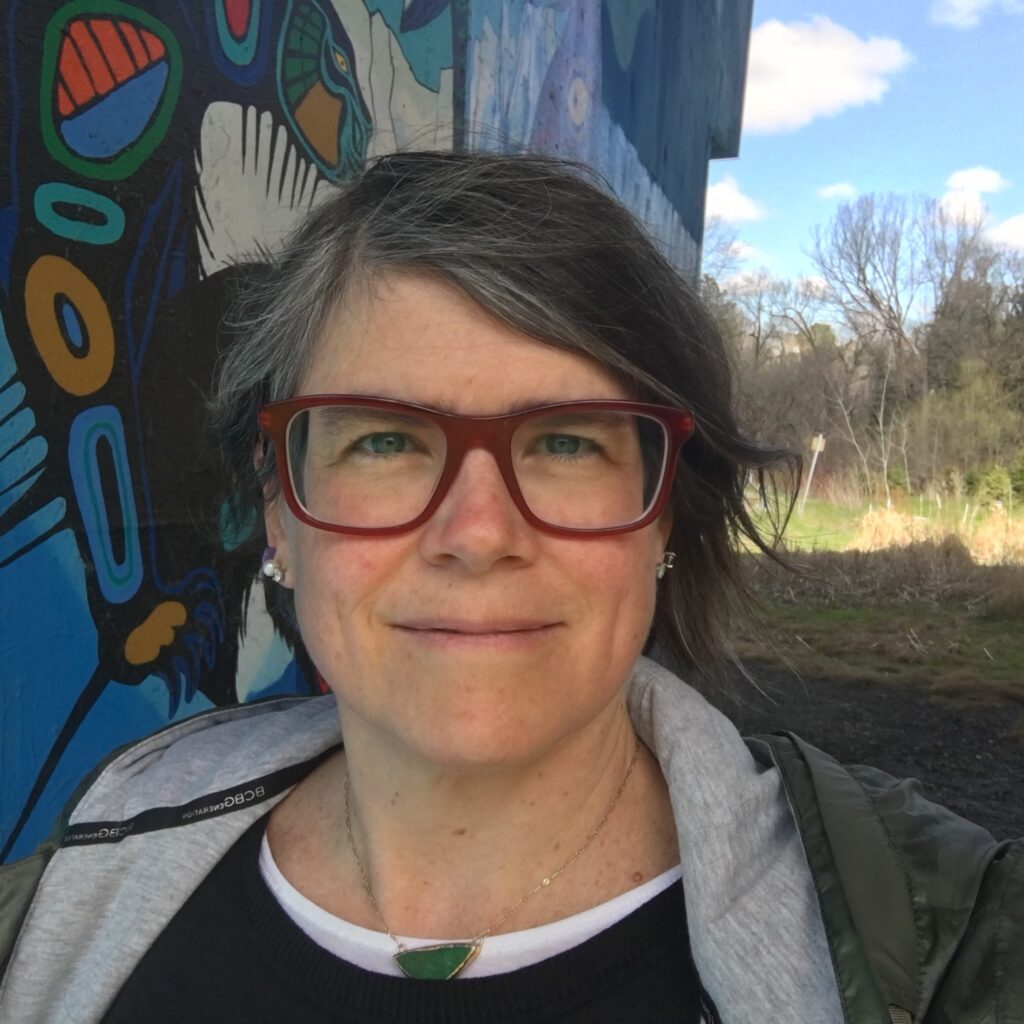The Healing Power of Relationship: Relational Neuroscience & the Power of Presence
ALLISON CREECH, MED, ND
We rely on the data from relational neuroscience, demonstrating that attuned, loving relationships are the foundation of emotional and mental health. (Mona Delahooke, PhD)1
As naturopathic doctors, we uphold a set of principles that define a unique perspective in medicine. Our ability to provide individualized care and to cultivate meaningful relationships with patients are collective strengths to be developed, both as an expression of our principles and as an independent route for healing. Regardless of our clinical focus or style of practice, it is through relationship that we support our patients in making meaningful change. Through decades of research, we have acquired a substantial literature base that describes the benefits of positive doctor-patient relations and patient-centered care. The power of relationship between doctor and patient, however, can be harnessed at a more fundamental level and serve a much deeper expression of our principles. In fact, the relational space serves a vital function and operates as a healing modality in and of itself.
When we learn to cultivate the relational space as a field of presence and attuned connection, that relational space has the power to become transformational. Our capacity for presence becomes medicine in its own right. If our fundamental goals as naturopathic doctors are to treat the whole person as an individual, to address root cause, and to engage the Vis, then presence within relation allows us to simultaneously do all 3. We engage the other in a physiologic experience of resonance, connection, and safety. We become attuned, and both of our central nervous systems respond. As we hold presence, we extend an unspoken invitation for the other to release from survival mode and to come into an integrated state of healthy homeostasis, growth, and vitality. Held in this space, the patient’s natural state of being emerges. This is mind-body medicine at its finest.
Advances in Relational Neuroscience
Though the concept of mind-body integration is ancient, recent decades have seen a growing emphasis in relational neuroscience and widespread discussion of its clinical implications. While there are many active contributors to the advancement of the field, the seminal work of Bessel van der Kolk, MD, Peter Levine, PhD, and Allan Schore, PhD should be recognized as foundational in developmental neuroscience, trauma, and somatic integration. Others, including Stephen Porges, PhD, Gabor Mate, MD, and Dan Siegel, MD, have brought this work into clinical and therapeutic settings. They have integrated neuroscience with clinical care and offer “interventions that can restore a sense of active mastery and the capacity to mindfully focus on the demands of the present.”2 Mind-body medicine today is an applied, experiential integration of all aspects of self, met and held with compassionate presence, within a secure relational system.
Stephen Porges, PhD
The relational component of well-being has long been an obvious point of interest within the social sciences (for a concise review, see the Mental Health Foundation’s 2016 report on Relationships in the 21st Century3). In neuroscience, however, relational influences were often overlooked. Stephen Porges, PhD, was an early advocate for a relational perspective on central nervous system development and function. Porges introduced his polyvagal theory in 1995, with a detailed examination of the phylogeny of mammalian neural circuits.4 Today, polyvagal theory guides our understanding of social engagement systems, neuroception, and the adaptive physiology of our autonomic state,5 and is widely applied in clinical practice. As Porges shares in a 2015 interview,6
[This] integrated physiology is … not only regulating health, growth and restoration, but …[also] supports social interaction to create safety for the individual. … [W]hat we’re really talking about is putting the brain in a state of safety. … When we’re safe, magical things occur. They occur on multiple levels – not merely in terms of social relations, but also in accessibility of certain areas of the brain, certain areas of feeling pleasure – being expansive, being creative, and being very positive as well.
Gabor Mate, MD
Mind-body integration and relational experience are also focal points of Gabor Mate, MD’s landmark book, When the Body Says No.7 First published in 2003, it provides a compelling exploration into mind-body medicine, delving into the physiological correlates of stress, emotional patterns, and developmental experience. As expressed by Dr Mate in a 2020 interview, “There is no separation to be made between the psyche and the soma – between people’s emotional lives, their limbic systems, their life histories and their physiology.”8 Dr Mate’s consistent advocacy for a humanist, mind-body approach to medicine has helped to revolutionize our understanding of relational influence and is providing a new lens through which to approach clinical care, particularly when it comes to trauma and addictions. Relational safety is again emphasized as a necessary component of healing. Dr Mate continues8:
[W]hen [people] are safe, their own natural healing process can unfold. That is the nature of life – there is healing capacity but what is needed for that to unfold is safety. I’d rather be with somebody who is capable of being present with me and compassionate, and can give me that connection, than with somebody who is super-clever, with all kinds of insights and techniques, but is disconnected from themselves and therefore can’t connect with me.
Dan Siegel, MD
Connection and relational experience is also emphasized in the work of Dan Siegel, MD. As he explains in a 2018 interview, “The brain has evolved as an elegant and powerful tool for social connection, wired for and by experience and relationships.”9 Dr Siegel is a pioneer in the field of interpersonal neurobiology (IPNB), and his work emphasizes the relational influence on both the structure and function of the human brain, carried across our lifespan. (For more information, please see his 1999 book, The Developing Mind10). IPNB research explores the connection between mind, brain, and relationship from the level of epigenetics to the real-world clinical encounter. As he writes in his 2012 Pocket Guide to Interpersonal Neurobiology,11
Our mental lives are profoundly relational. The interactions we have with one another shape our mental world. Yet as any neuroscientist will tell you, the mind is shaped by the firing patterns in the brain. And so how can we reconcile this tension—that the mind is both embodied and relational? Interpersonal Neurobiology is a way of thinking across this apparent conceptual divide.
The ability to link differentiated components of a system into an integrated whole is a central concept in IPNB. Considered to be “the core mechanism in the cultivation of well-being,” integration is about “the linkage of different aspects of a system—whether they exist within a single person or a collection of individuals. Integration is seen as the essential mechanism of health as it promotes a flexible and adaptive way of being that is filled with vitality and creativity. The ultimate outcome of integration is harmony.”12 Integration made visible is kindness and compassion.13
Healing Trauma
With an understanding of relational neuroscience, we can begin to see why the way we show up in a clinical encounter is so important. Presence allows for authentic connection. Our ability to be present, regulated, and integrated correlates with safety as experienced by the other. When as practitioners we hold a space that is soothing and safe, the present moment becomes a space for authentic experience of self. We attune with the other, and that person experiences being seen, received, and held in a compassionate presence. Both of our nervous systems shift into a ventral vagal state, and our social engagement systems activate. We can both relax into our experience, and our natural and vital physiology emerges. In this way, our own compassionate presence helps generate a healing response in another.
Compassionate presence allows for the release of survival mechanisms we have employed to adapt to our life experience. It provides a safe space in which to experience repressed emotional pain and to integrate disowned aspects of self. Here, we can support patients in developing an inclusive relationship with themselves and hold space for the physiologic expression of emotional energy. As Dr Mate explains,8
Compassion is not about helping people avoid the pain. It’s about helping people face it. The trauma happened in the first place when people, usually in childhood, tried to deny and escape from their pain because there was no one to support them. The point of therapy is not to deliberately cause pain but to understand that, when you are doing it right, the pain will emerge … So fierce compassion is not being afraid of people experiencing pain. It is about being there for them in a way that can help them face that pain.
Overwhelming painful experience, contracted and held in defensive patterns, is characteristic of trauma. Compassionate presence supports the restoration of response flexibility through all levels of self – the nervous system, psychological systems, and relational systems. As Peter Levine explains, “Trauma can be defined as any unresolved autonomic nervous system response. It’s about the nervous system’s response to an event, not necessarily the event itself. Events can affect each of us very differently. What happens in trauma is, our body doesn’t go back to where it was before, it stays in this stuck place.”14 In this way, trauma is both a loss of response flexibility and a chronic disruptor of connection. From this perspective, trauma is not just about having experienced adverse events; it is more about the context in which those events occurred.
As Dr Levine explains, “Trauma is not what happens to us, but what we hold inside in the absence of an empathetic witness.”15 This is particularly true in childhood, when the absence of a nurturing relationship significantly impairs resilience. Without the relational container, experience becomes overwhelming, and a chronic state of stress, defense, and survival becomes locked in. Disconnection from self is a primary protective strategy. Sacrificing authenticity is an effort to preserve attachment, but it “leaves a mark on your psyche and in your body that impairs your functioning in later life.”8 Gabor Mate explains16:
Trauma is not what happens to you. Trauma is what happens inside you. What happens inside you is a constriction. So the question is, how do you keep that child from being constricted from their experience? How do you keep them from being limited by it? The trauma is that the child has to keep it in. The trauma is that there is nobody to listen to them. Nobody to validate their feelings. That’s why they shut down. That’s why they constrict. If they had someone to talk to, who heard and validated their feelings, they would not have been traumatized.
So the trauma itself is an adaptation, it’s a restriction, it’s a response to a lack of support. Which also means, that by the time the traumatic event happened, they were already traumatized. The traumatic event was not the primary trauma. The primary trauma was that the child was isolated in the world and couldn’t talk to anybody. But that happened before the traumatic event started. By the time that the event happened, the child already knew that they were alone, helpless, and without support. So they had to keep it in, push it down.
The child needs someone to express their feelings to, and to have their feelings mirrored back to them. Then they won’t be traumatized. That’s the presence of what is called the ’empathetic witness.’ The “empathetic witness” is Alice Miller’s phrase. It’s not necessarily somebody who can change the child’s situation, but somebody that can mirror, validate, and accept that child’s feelings and emotions. That’s how you protect people.
This sort of relational misalignment, where the child is alone with their experience and unable to process and move through it, is perhaps the most common and also most invisible form of trauma. Without a nurturing adult to help them, children internalize messages that invalidate their well-being, and they disconnect from themselves as they try to adapt to the world around them. These adaptations tend to be quite stable through life, as they are deeply related to survival and protection. This pattern of disruption is held in the autonomic nervous system, and ventral vagal systems become dominated by sympathetic and dorsal vagal survival states. We function, but without the physiologic experience of safety and connection.
Compassionate Presence
When we recognize that the clinical encounter provides an opportunity to offer a safe, attuned, relational experience, our presence becomes an invitation for the reengagement of safe social connections and the reactivation of ventral vagal systems. The body shifts out of survival mode, creating space for healthy homeostasis to re-emerge. The relationship is the catalyst for the neurobiological shift. As Dr Mate explains, “The wounding happened in relationship so the healing for the most part has to happen in relationship.”8 And, in this relationship, present-moment experience of safe connection with another is imperative; we must be the empathetic abiding presence that can hold the relational container while the other processes their experience and the accompanying physiology. As Stephen Porges puts it, “Safety isn’t the absence of threat but the presence of connection.”17 It is the quality of connection that prompts the autonomic nervous system to shift into a physiologic state of safety, ease, and calm. Without that ability to turn off our autonomic defenses, it is impossible for physical or mental health to flourish. Underneath any person’s physical or emotional symptoms, we will find this root cause.
As we develop our capacity for empathetic abiding presence, we support the opportunity for neurobiological integration and open a conduit for the Vis. We see individuals in their authenticity and are with them in their vulnerability. We provide a safe connection and an attuned, responsive relationship that supports others as they experience their bodies, feel their feelings, and show up more and more authentically as themselves. Within this safe relational container, we are able to accept and acknowledge our experience and the ways that we have learned to cope. We provide a relational platform for biological restoration, helping others to drop out of survival mode and into a place of inner presence, safety, and calm. This is the physiologic state that underlies all healing. Regardless of external conditions, this state becomes available to us when the inner conditions are oriented to a compassionate and inclusive relationship with ourselves. If “the essential nature of trauma is … a loss of wholeness,”8 then we have all had this experience. The route of vitality is one of integrating our experience, remembering who we are, and reconnecting with the authentic self. Being present – with ourselves and with our patients – makes this possible. Connection with ourselves is available within the present moment, held and supported by compassionate presence of another. This is the heart of our medicine.
References:
- Mona Delahooke, PhD. Beyond Behaviors: Using Brain Science and Compassion to Understand and Solve Children’s Behavioral Challenges. Available at:https://www.facebook.com/thevisibleparent. Accessed April 19, 2021.
- Trauma Research Foundation. 32nd Annual Boston International Trauma Conference: Neuroscience, Embodiment, and the Restoration of Self. May 26-29, 2021. Van der Kolk, Bessel MD, conference director. Available at: https://www.traumaresearchfoundation.org. Accessed April 19, 2021.
- Mental Health Foundation. Relationships in the 21st century. May 2016. Available at: https://www.mentalhealth.org.uk/sites/default/files/Relationships-in-21st-century-forgotten-foundation-mental-health-wellbeing-full-may-2016.pdf. Accessed April 30, 2021.
- Porges SW. Orienting in a defensive world: mammalian modifications of our evolutionary heritage. A Polyvagal Theory. Psychophysiology. 1995;32(4):301-318.
- Porges SW. The polyvagal perspective. Biol Psychol. 2007;74(2):116-143.
- National Institute for the Clinical Application of Behavioral Medicine. Body, Brain, Behavior: How Polyvagal Theory Expands Our Healing Paradigm. A Webinar Session with Ruth Buczynski, PhD and Stephen Porges, PhD. May 13, 2015. Available at: https://tinyurl.com/n8pzkady. Accessed April 19, 2021.
- Mate G. When the Body Says No: The Cost of Hidden Stress. Hoboken, NJ: John Wiley & Sons, Inc; 2019.
- Mate G. Healing the wounds of trauma. Therapy Today. 2020;31(7):28-31.
- Psychotherapy.net. Dan Siegel on Interpersonal Neurobiology. [Video]. Available at: www.psychotherapy.net/video/interpersonal-neurobiology. Accessed April 19, 2021.
- Siegel DJ. The Developing Mind: Toward a Neurobiology of Interpersonal Experience. New York, NY: The Guilford Press; 1999.
- Siegel DJ. Pocket Guide to Interpersonal Neurobiology: An Integrative Handbook of the Mind. New York, NY: W.W. Norton & Co; 2012.
- Dr. Dan Siegel. An Introduction to Interpersonal Neurobiology. Available at: https://drdansiegel.com/interpersonal-neurobiology. Accessed April 19, 2021.
- Siegel D. Interpersonal Connection, Compassion, and Well-Being. In: Loizzo J, Neale M, Wolf E, Eds. Advances in Contemplative Psychotherapy: Accelerating Healing and Transformation. New York, NY: Routledge; 2017. Available at: https://www.embodiedphilosophy.com/interpersonal-connection-compassion-and-well-being/. Accessed April 30, 2021.
- Beyond Theory Podcast. S2 E13: Dr. Peter Levine on How Trauma Changes Our Minds and Bodies. Available at: https://beyondtheorypodcast.com/dr-peter-levine-on-how-trauma-changes-our-minds-and-bodies/. Accessed April 19, 2021.
- Levine PA. In an Unspoken Voice: How the Body Releases Trauma and Restores Goodness. Berkeley, CA: North Atlantic Books; 2012.
- Stillpoint LF. Empathetic Witnessing. July 26, 2018. Available at: https://lynnfraserstillpoint.medium.com/empathetic-witnessing-868216e0d4d. Accessed April 19, 2021.
- Porges SW. Social Connectedness as a Biological Imperative: Implications of Polyvagal Theory in the Classroom. September 21, 2019. (Powerpoint presentation).

Allison Creech, MEd, ND is a licensed naturopathic doctor with more than 15 years of experience. Dr Creech works with people to establish healthy mind-body patterns that support whole-person wellness. She is a professor at the Canadian College of Naturopathic Medicine and is a certified Compassionate Inquiry Practitioner. She is also part of the Compassionate Inquiry Educational Team, supporting the work of Dr Gabor Mate, MD, as a facilitator and mentor. Dr Creech practices relational medicine from a perspective of resiliency and confidence in the human spirit. Website: www.alightalive.com










